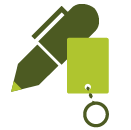
Where there are lots of people there can be lots of waste – and much of it plastic. Now, more than ever, the events industry is looking at ways to reduce its plastic footprint. Marion McKean, Operations Director at the Edinburgh International Conference Centre, explains how event planners can play their part by creating low – or no – plastic events
It’s a fact that conferences and events produce waste. Consider the factors: a mass of people, a limited time frame, a dedicated venue and a need for catering. All of these combine to produce the inevitable by-product of waste.
Needless to say, sustainability ranks highly on the list of considerations for conference planners, organisers and hosts. And it’s working. As a result of focusing on sustainability, the way our industry manages waste has greatly improved in recent years. The same can be said of many other industries and society in general.
There is one waste challenge, however, that remains critical: plastic. Despite growing public concern as a result of mainstream media coverage and well-publicised efforts on behalf of multinational companies, global plastic pollution continues to rise. A recent UK Government report found that the amount of plastic in the world’s oceans is set to treble in less than a decade.
"A recent UK Government report found that the amount of plastic in the world’s oceans is set to treble in less than a decade."
Plastic has undoubted benefits. Plastic cups, for instance, are cheap, lightweight and fit for purpose. They’re also durable, to the extent that it takes approximately 500 years for one to degrade.
Herein, of course, lies the crux of the matter. Our over-reliance on plastic – and the reason there’s so much of it polluting our environment – ultimately stems from its convenience. In conferencing, plastic has long been the go-to material for the likes of signage, serveware, barware, merchandise and stationary – all for the sake of convenience. But convenience comes at a cost. Given the current trajectory, by 2050 the amount of plastic in the world’s oceans will outweigh fish.
We all have a role to play in addressing the plastic pollution crisis, both as businesses and as members of society. I’m a great believer in controlling things that we can control, and here at the EICC we’ve made some significant commitments as a venue to reduce our plastic footprint – including eliminating single-use plastic entirely from our front of house operations.
But the opportunity for us as an industry to reduce our plastic footprint doesn’t end with the venue. Here are eight key considerations for planners looking to minimise plastic when it comes to conferencing.

1. Start talking about plastic early with the venue
Any serious sustainability policy today should clearly outline a venue’s commitment to reducing plastic use. This proves that it’s an integral element of the venue’s overall focus on sustainability, not just an afterthought. Capitalise on this by making it known to the venue during the planning stages that you want to reduce plastic at your conference, and establish a clear plan that everyone involved – the planners, the venue, the stakeholders – will follow. Identify how plastic might be ‘consumed’ at your conference, where it can be suitably left out or substituted (see the next step) and what goals you could realistically work towards. It’s much easier to address plastic reduction early on than to make big last-minute changes.

2. Reduce, reuse, recycle
Regardless of the nature or size of your conference, the following mantra should form the basis of your plan to tackle plastic: reduce, reuse, recycle.
Eliminating plastic goods entirely isn’t always an option for conferencing, but omitting or, at the very least reducing the most ecologically harmful ones (i.e. non-recyclable) should be at the top of your list of priorities. Also identify suitable substitutes; while recyclable plastic is better than non-recyclable, non-plastic is often better still. It’s a worrying statistic that only 9 per cent of all plastic waste ever produced has been recycled. Here at the EICC, for instance, while the clients’ decision is final we’d always advise against offering plastic water bottles – even recyclable ones.
Where possible, omit dates from your signage so that it can be reused in following years
Second to reduction is reuse. Where plastic is unavoidable, try to identify opportunities to reuse rather than dispose. Delegate name badges are a great example: consider setting up a drop-off station where people can hand in their badges for reuse at future conferences. Plastic signage is another example: where possible, omit dates from your signage so that it can be reused in following years.
Third is recycling. While research points to reduction trumping recycling, it’s still important for us to take responsibility and recycle plastics a) where reduction and reuse isn’t an option, and b) where we can do so properly. At the EICC all of our waste, including plastic, is delivered to a transfer station where it is segregated.


3. Communicate with your delegates
If delegates know that your conference has a serious focus on reducing plastic, they’ll likely come prepared. Always reiterate your low-plastic commitment when communicating with them. Depending on what’s been decided during the planning stage, you might want to consider encouraging delegates to bring their own water bottles, coffee cups, pens – even reusable straws. Such items are becoming more and more popular as the general public’s awareness of plastic pollution increases. More than just appealing to delegates on an eco-conscious level, making clear efforts to reduce plastic has become the expected norm in many commercial activities, not least conferencing. Delegates can and will give negative feedback if it’s clear that proper efforts to reduce waste are not being made.

4. Review your giveaways
One of the biggest hotspots for plastic waste at conferences are delegate giveaway bags. While the bags tend to be non-plastic and reusable, their contents routinely feature plastic – lanyards, key rings, badges, pens, fridge magnets, stress balls, packet confectionary, USB flash drives and so forth. The best policy when it comes to delegate giveaway bags is to consider their ultimate need. They’re often included because it’s the done thing, not because they add any real value for delegates. If you are intent on giving delegates something to takeaway that will remind them of your conference, focus on quality – and sustainability – over quantity. While admittedly more expensive, one branded stainless steel drinks bottle has much more chance of being utilised than an array of cheap, plastic-based goods that will likely end up in landfill.

5. Make sure caterers are on board
Disposable catering items are a huge contributor to plastic pollution. While this is an especial concern for event planners, it’s still vital that conference planners ensure that their caterers are fully on board with your commitment to reducing plastic. It’s no use putting in the effort to reduce plastic at your conference only for delegates to be handed single-use tasting plates and cutlery by your caterers. Whether you’re relying on internal or external caterers, make sure they’re involved from the very start during the planning stages of your conference. Our catering partner, Leith’s, shares our commitment to reducing plastic as a venue. Our front of house operations now rely on compostable serveware for both drinks and food.

6. Celebrate your success
While striving for greater sustainability, it’s vital to take stock of your achievements and communicate them to you delegates and stakeholders. For instance, if you originally planned to provide 1000 delegates with bottled water but made the decision to encourage them to bring their own reusable or recyclable water bottles instead, you’ll have prevented 1000 plastic bottles going to waste. Simple, bite-size snippets of information like this convey the positive impact you and your delegates and stakeholders have had on the environment and leave them with good impressions. Share your achievements on post-conference communications and social media to cement your company’s reputation as being environmentally conscious when it comes to plastic. Finally, don’t shy away from discussing the results of your event with the venue. Work together to collate any statistics relating to plastic use and recycling, and look forward to how things can be improved for following conferences.
If you have any questions about how the EICC is working to reduce the environmental impact of events feel free to get in touch.